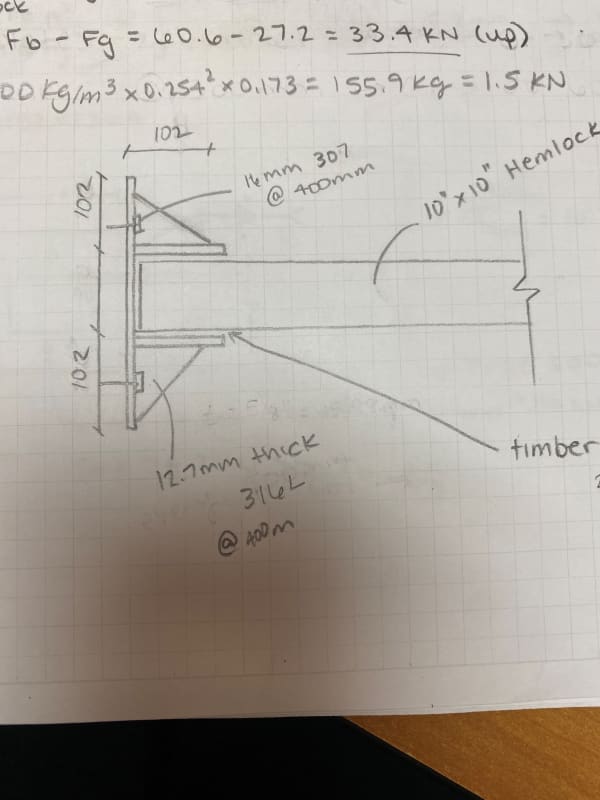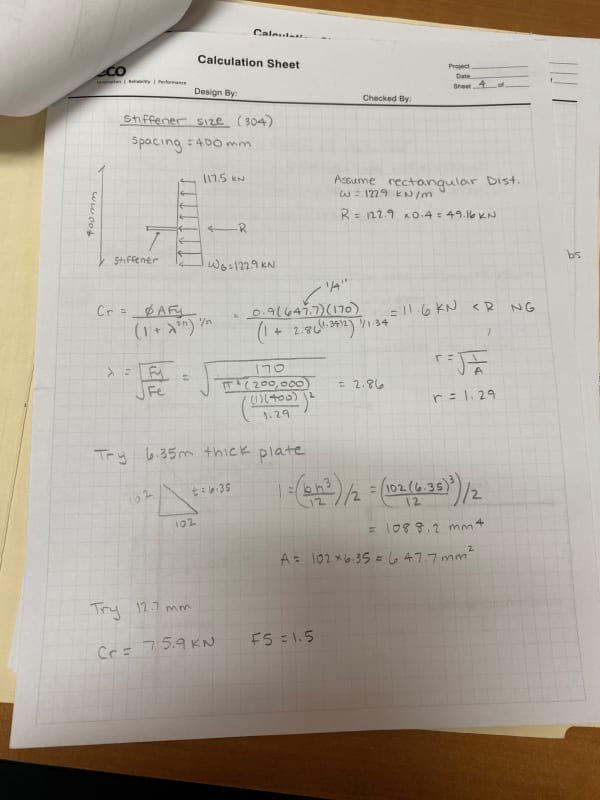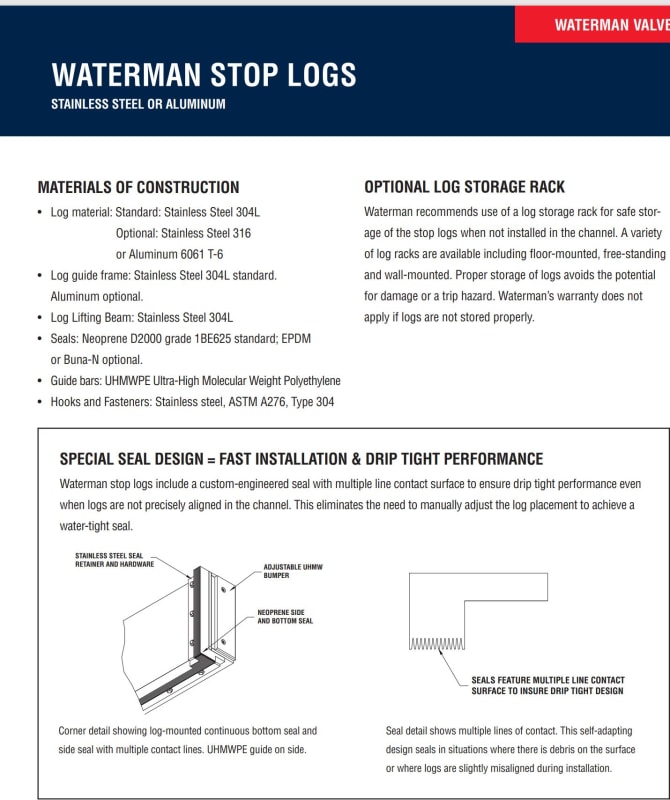Hi everyone,
I am designing a stoplog gain which is essentially a channel or in my case two angles bolted to a concrete wall which hold 10 x 10’s in place. See attached sketch.
In this configuration I’m loading the flange of an angle. I have sized the angle flange based on bending and shear and found I need to add stiffeners spaces at 400 mm.
I’ve sized the stiffener thickness based on the assumption that the stiffener acts as a column. See attached hand calculations.
Is this the correct approach?


I am designing a stoplog gain which is essentially a channel or in my case two angles bolted to a concrete wall which hold 10 x 10’s in place. See attached sketch.
In this configuration I’m loading the flange of an angle. I have sized the angle flange based on bending and shear and found I need to add stiffeners spaces at 400 mm.
I’ve sized the stiffener thickness based on the assumption that the stiffener acts as a column. See attached hand calculations.
Is this the correct approach?



